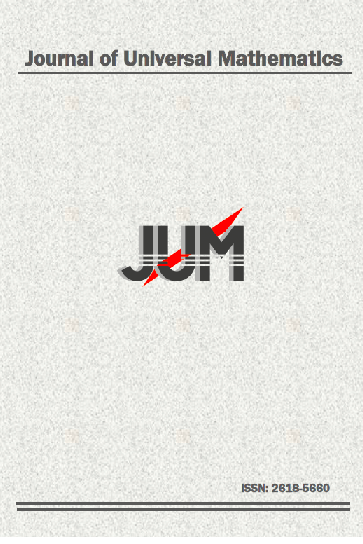STATISTICAL RELATIONS MEASURES
STATISTICAL RELATIONS MEASURES
Statistics, relations measures, tests,
___
- B. Everıtt, Statistics for Psychologists. Lawrance Erlbaum Associates, Inc., New Jersey, 378, (2001).
- B.G. Tabachnick, L.S. Fıdell, Using Multivariate Statistics. Harper Collins College Publishers, New York, 880, (1996).
- D.J. Sheskin, Parametric and Nonparametric Statistical Procedures. CRC Press New York, 1193, (2004).
- F. Üçkardeş, A Study on Statistical Tests, KSU, Institute of Science and Technology, Department of Animal Science, M.Sc., 280, (2006).
- J. Levın, J.A. Fox, Elementary Statistics. HarperCollins Publishers Inc, New York, 501, (1991).
- J. Stevens, Applied Multivariate Statistics for the Social Sciences. Lea Publishers, New Jersey, 659, (1996).
- J.W. Dıxon, J.F. Massey, Introduction to Statistical Analysis. McGraw-Hill, United States, 636, (1969).
- L.D. Howıtt, D. Cramer, The Sage Dictionary of Statistics. Sage Puplication, London UK, 208, (2004).
- M. Ergün, Computer Statistics Applications in Scientific Research SPSS for Windows. January Broadcasts, Sıhhiye-Ankara, 292, (1995).
- R. Alpar, Applied Statistics and Validity-Reliability with Examples from Sports Health and Education Sciences, Detail Publications 2nd Edition, 333-362, (2012).
- R. Bakeman, M.J. Gottman, Observing Interaction An Introduction to Sequential Analysis. Cambridge University Press, UK, 221s. (1997).
- R.R. Wılcox, New Statistical Procedures for the Social Sciences. Lawrance Erlbaum Associates, Inc., New Jersey, 420, (1987).
- S. Siegel, N.J. Castellan, Nonparametric Statistics for the Behavioral Sciences. McGraw-Hill book Company, United States of America, 399, (1988).
- Y. Karagöz, Determination of Relationship Coefficients and Factors Affecting Student Achievement. Electronic Journal of Social Sciences, 9(32), 425-446, (2010).
- W.J. Conover, E.M. Johnson, M.M. Johnson, A Comparative Study of Tests for Homogeneity of Variances, with Applications to the Outer Continental Shelf Bidding Data. Technometrics, 23:351-361, (1981).
- ISSN: 2618-5660
- Başlangıç: 2018
- Yayıncı: Gökhan ÇUVALCIOĞLU
SMARANDACHE CURVES ACCORDING TO ALTERNATIVE FRAME IN E^3
RICCI SOLITONS AND GRADIENT RICCI SOLITONS ON NEARLY COSYMPLECTIC MANIFOLDS
STATISTICAL RELATIONS MEASURES
Murat SÖZEYATARLAR, Mustafa ŞAHİN, Esra YAVUZ
ON SPHERICAL INDICATRICES AND THEIR SPHERICAL IMAGE OF NULL CURVES IN MINKOWSKI 3-SPACE
Gökhan ÇUVALCIOĞLU, Serkan Ural VAROL
C-PURE SUBMODULES AND C-FLAT MODULES
BLOW-UP RESULTS FOR A VISCOELASTIC PLATE EQUATION WITH DISTRIBUTED DELAY
Hazal YÜKSEKKAYA, Erhan PİŞKİN
WEAKLY LOCALLY ARTINIAN SUPPLEMENTED MODULES
